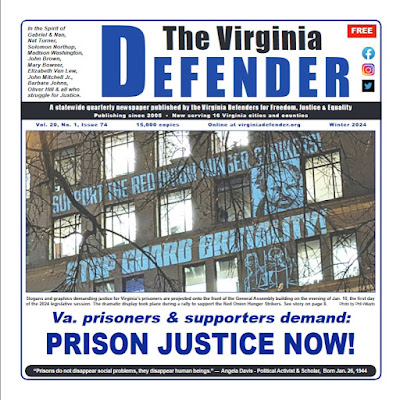The Economic Study
The 2-Part Economic Study: Equity in Preservation and Development
----------------------------------------------------
About the study
"Preservation Virginia, a private non-profit organization and statewide historic preservation leader, today announced that it is among the inaugural class of grantees of the National Trust for Historic Preservation’s newly established African American Cultural Heritage Action Fund. The private non-profit was awarded $75,000 to conduct a two-part economic study of Shockoe Bottom. The study will make the case for developing the historic area as a heritage tourism destination through the creation of a memorial park while embracing equitable economic revitalization.
The study will be conducted through a partnership effort between Preservation Virginia, the National Trust for Historic Preservation, the Sacred Burial Ground Reclamation Project, the Center for Design Engagement at the University of Massachusetts Amherst and the Valentine museum." - excerpt from PVA press release, July 2018.
With care, intention and a commitment to equity, Richmond can become a national and international leader for truth and reconciliation by highlighting Shockoe Bottom as an internationally recognized Site of Conscience as well as leveraging its history to create a thriving cultural and economic center.
Building on these efforts, the Sacred Ground Historical Reclamation Project, The National Trust for Historic Preservation, and Preservation Virginia support an extraordinary solution: the community-generated proposal for Shockoe Bottom Memorial Park. Developed in 2015 and updated in 2017 by the Center for Design Engagement in Amherst, Massachusetts, this proposal marries a memorial park and interpretive education center with equitable economic revitalization. The proposal suggests securing the land and protective zoning, tourism promotional planning, existing local and state funding, and independent oversight. Consideration of this proposal should be at the heart of any planning and development efforts going forward.
In 2018, after participating as a Rose Center fellow, Mayor Levar Stoney established the Shockoe Alliance to support, guide and embrace a unified vision for Shockoe Bottom, rooted in history and collaboration. It is our desire that the Shockoe Bottom Small Area Plan generated from this process consider the community generated Memorial Park proposal and is rooted in equitable development principles, practices and policies.
To inform the process, we brought together a group of experts in racial equity, real estate development, and neighborhood revitalization to consider the equitable redevelopment of Shockoe Bottom. These individuals volunteered their time and talent to consider the equitable redevelopment of Shockoe Bottom.
Resource Group members included:
Christopher Coes, Washington, DC. Smart Growth America
Fabrizio Fasulo, Richmond, VA. VCU Center for Urban and Regional Analysis
Chenee Joseph, Atlanta, GA. Historic District Development Corporation
Julie Nelson, Berkeley, CA. Race Forward
Kennedy Smith, Arlington, VA. Community Land Use + Economics Group
Khalil Uqdah, Baltimore, MD. Cross Street Partners
The group focused on the study area recognized by the Shockoe Alliance, a 50 block area adjacent to the African Burial Ground and the proposed sites of the Devil’s Half Acre/Lumpkin’s Slave Jail museum and the Community Supported Memorial Park. Through discussions facilitated by Ebony Walden Consulting, the Resource Group developed a definition of equitable redevelopment, a set of
recommendations for the future redevelopment of the study area and case studies of innovative models of equitable redevelopment to inform the Shockoe Bottom Small Area Planning Process. This report is a compilation of their recommendations. Other resources that informed the development of this report are listed in the reference section at the end of this document.
To complement the Resource Groups’ findings, VCU’s Center for Urban and Regional Analysis (CURA) has developed a qualitative and quantitative analysis of the heritage tourism opportunities of a transformed African Burial Grounds, Lumpkin’s Slave Jail site and parking lots into Shockoe Bottom Memorial Park, a Site of Conscience for truth and reconciliation.
This two-part study was made possible through a grant from the National Trust for Historic Preservation’s African American Cultural Heritage Action Fund.
